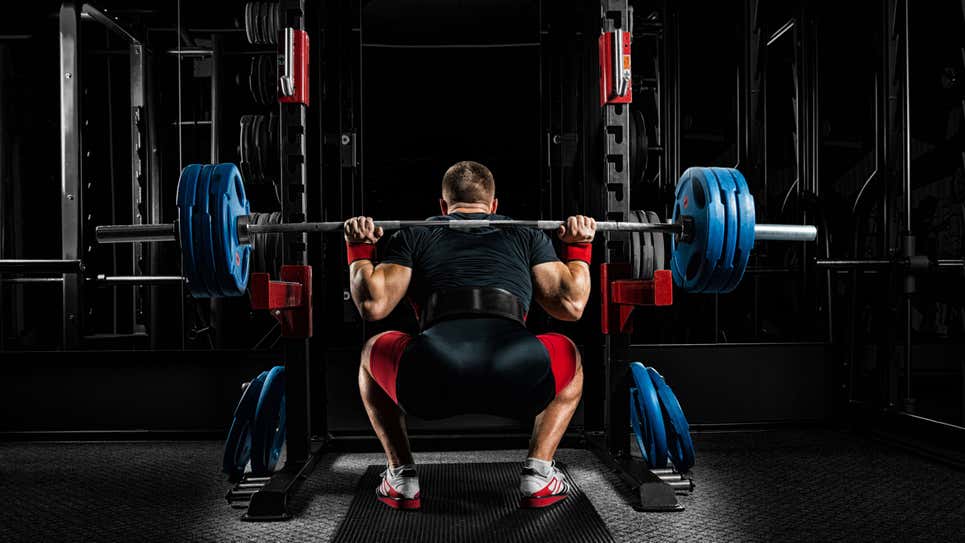How Many Warmup Sets Is Enough?

If you’re planning to lift a heavy weight, it’s important to do warmup sets to prepare yourself. Normally you’ll lift the bar, then add some weight, and then add some more weight, and so on. But how many of those jumps do you need to take before you can considered yourself warmed? And what happens if you choose too many or too few?
Remember, warmup sets are the last stage of warming up for a lift. Everything before that is optional, but you’ll probably want to do enough cardio (or other movement) to get yourself physically warm, and if you want to do some stretches or technique drills, you’ll work those in too before moving on to your sets.
Start with the bar
Assuming we’re talking about a barbell lift, your first stop is the empty bar. Whether you’re planning to squat, bench, snatch, or anything else, a set with the empty bar is going to help your body remember how to do the exercise and feel out how any tight muscles or old injuries are responding to movement today.
Barbend surveyed seven elite powerlifters and weightlifters, asking how they warm up for squats, and several mentioned they like to pause in the bottom of their empty bar squats to loosen up a bit, or even do multiple sets with the empty bar.
How many reps should you do with the bar? Opinions vary so much, it doesn’t seem to matter. You’re just want to get comfortable with the movement before you add weight. Some lifters like to keep every set the same as their working sets (so five reps with the bar if the day’s goal is to work up to heavy sets of five), while others will start with 10 or 12 reps for this lighter work.
Take three to five jumps
In any conversation with experienced lifters, people will have different ideas of exactly which weights to use for the next few sets.
If you’re going for a small number of reps in your work sets (one to three reps, let’s say), you might want to do your warmups at 50%, 60%, and 70%, before going 80%, 85%, and so on. (More in a minute about why you’ll want to take smaller jumps as you approach to your goal.)
If you’re doing higher-rep sets, like 10s, you might want to start a little lighter with that first warmup and take the rest of the jumps accordingly.
Another consideration: somebody who is working up to a lower number, like 135 pounds, probably won’t need as many warmup sets as a beast going for, say, 500. That lower-weight lifter may need to spend more time on empty-bar sets or even on cardio beforehand, just to make sure they’re warm, whereas the stronger person can probably slap on a pair of plates each set (135, 225, 315, 405) as they work their way up.
A good rule of thumb is to take three to five jumps in weight, roughly evenly spaced between the empty bar and your working weight for the day. For example, the person squatting 135 might do just the bar (45), then 95, then 115, then 135.
Approach PR attempts carefully
Sometimes you have to sneak up on a personal record as if you’re trying not to scare it. If you think you’ll be able to squat 200 pounds for the first time today, you wouldn’t jump straight from an easy warmup to your goal weight. Instead, after you hit 155, you might decide to go for 185. Based on how that feels, you can decide if you’d like to try 195, and from there, whether you’re ready for 200 or maybe a little more.
Basically, you don’t want to be the dummy who takes too big a jump and misses the attempt. How you feel at 135 isn’t going to tell you whether you’re ready for 200. It’s helpful to view those last few warmups as testing the waters, the results of each attempt guiding your choice for the next one.
What happens if you choose the wrong warmups?
If you take jumps that are too big, you could end up missing a PR attempt or, worse yet, overshooting what was supposed to be a normal working set for the day. You might also get to your working set before you feel properly warmed up. In this case you could still be feeling a little stiff or not have your technique dialed in. It’s not the end of the world, but you’re making your life harder for no reason. If you had taken four warmup sets instead of just two, you might have had a better day in the gym.
On the other hand, you don’t want to take too many warmups. In the worst case, you’ll wear yourself out by lifting a bunch of sets you really didn’t need and you won’t be able to put in as much effort on your work sets as you’d like. Even if you don’t wear yourself out, you may wind up spending more time in the gym than you’d like. It’s better to take just enough warmup sets to do the job, get your work sets done, and move on with your life.
The post How Many Warmup Sets Is Enough? appeared first on life hacker
